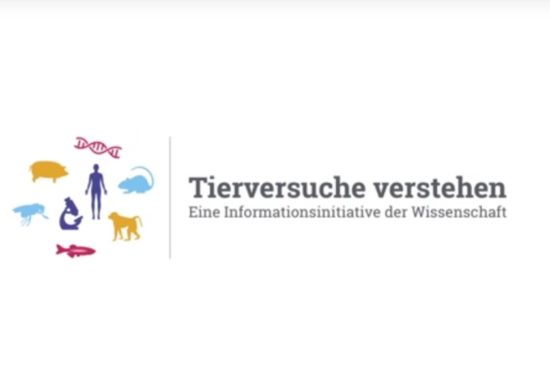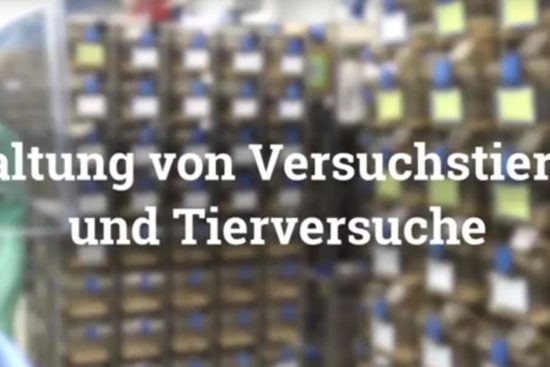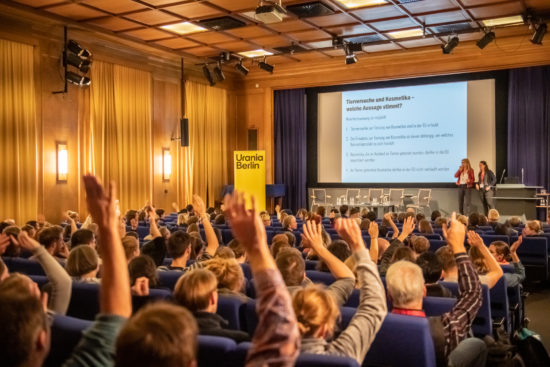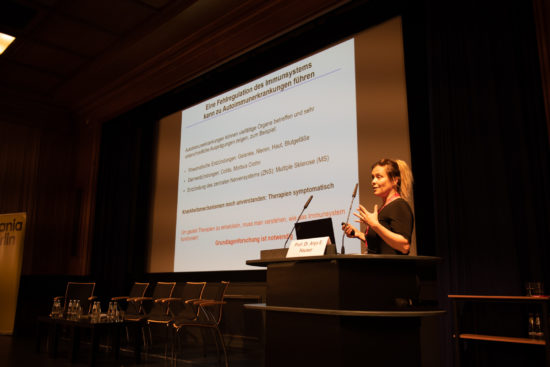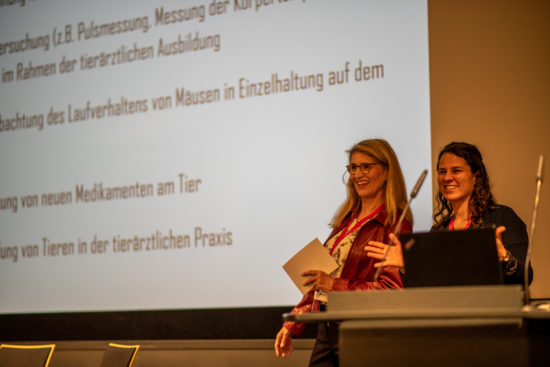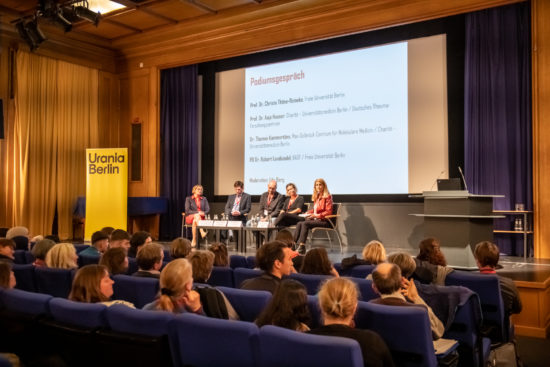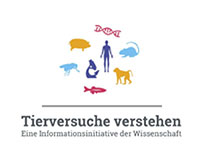

Animal Experiments at the DRFZ
Taking the welfare of animals into account
Research Focus of the DRFZ
Around 10 % of the population suffer from autoimmune diseases such as rheumatism, psoriasis, lupus erythematosus, intestinal inflammation or multiple sclerosis, to name a few. Disability and pain becomes a daily companion. Even worse, these patients are more likely to develop cancer and die at an early age.
Medications available to date must be taken lifelong and may alleviate these chronic diseases but cannot cure them. Even the most effective drugs are merely able to temporarily interrupt the mechanisms of inflammation but do not eliminate their causes. In addition, many therapies are associated with significant side effects, as their mechanisms need to act centrally due to the nature of the disease and thus strongly suppress the immune system. This may lead to intolerances or even therapy failure in the long run. This is why scientists and physicians at the DRFZ are investigating the causes of these diseases, in which animal experiments are still indispensable.
The DRFZ has received an acknowledgement for:

The initiative “Tierversuche Verstehen” (Understanding Animal Research) honors research institutions and scientific organizations that show exemplary commitment to transparent and open communication and dialogue about animal l research. In its justification for the award of the DRFZ, it writes:
“The burdens to which animals are exposed in this research are openly shown by the DRFZ on its detailed website on animal experiments. Likewise, questions such as “Why are the available alternative methods not sufficient to abandon animal experiments?” are answered. (…) In order to better inform the public and to participate in the discussion about animal experiments, the DRFZ also participates in events such as “Tierversuche im Gespräch” or “Leibniz debattiert“. Here, the question is discussed with the general public whether animal experiments are still necessary, what the alternatives offer nowadays and how they should be dealt with.”
More information on the quality seal for best-practice communication in animal research
Animal Experiments, Alternative Methods, and Animal Welfare
According to the Animal Protection Act, animal experiments are only allowed in cases in which no animal-free methods are available (Animal Protection Act § 7a Passage 2 No. 2). Only by animal experiments, it is possible to find out which circumstances cause the immune system to react against one’s own body. An ex vivo-simulation of how the cells of the immune system communicate with each other and with the other cells of the body in complex organ structures is still not possible to date. However, this knowledge is indispensable for the development of new therapeutic strategies with fewer side effects, of more potent therapies or even of a cure for these yet incurable autoimmune diseases. Likewise, the effects and side effects of drugs on other organ systems and functions can only be tested in a living organism, especially since the complex interactions between the various organ systems have so far been difficult or impossible to simulate in vitro. For this reason, in addition to the fundamental ethical aspects, new therapeutic strategies must first be tested in animal models. If successful, clinical studies are then carried out in the patient.
Less complex interactions, however, can already be investigated without animal experiments, e.g. using cell material from patients or healthy volunteers. For example, many research groups of the DRFZ work completely without animal experiments. They are constantly developing new test systems to analyze cells of the immune system outside the body. However, animal experiments will remain indispensable in the foreseeable future, whilst, at the same time, facilitating the development of possible alternative methods. Also, alternatives are already in use in addition to animal experiments to reduce the number of animals needed.
Scientists are consulted by independent Animal Welfare Officers who also ensure and monitor the animal welfare at the institution and the compliance with all guidelines and regulations. The Animal Welfare Committee, which meets regularly, supports the Animal Welfare Officers in their work and in surveilling animal welfare.
3R Principles
The scientists at the DRFZ are highly aware of their responsibility towards animals and apply the 3R principle in their animal experiments in order to reduce the suffering of animals in animal experiments to an indispensable level. The 3Rs stand for “Replace, Reduce, Refine”.
In practice, this mean the researchers at the DRFZ try to carry out as many experiments as possible without the use of animals (“Reduce & Replace”), for example by using cell cultures. When carrying out animal experiments, care is taken to use a statistically calculated minimal group size of animals but not more animals than necessary (“reduce”). Today’s highly developed technology now offers many non-invasive research methods (“refine”), which reduce the suffering of the animals and allow for a vast amount of data being generated from a small number of animals (“reduce”).
Species, Husbandry, and Handling of Laboratory Animals
The DRFZ exclusively works with mice. The genetics, anatomy, and physiology of mice are evolutionarily very similar to those of humans and thus provide an important basis of disease research. Most mice at the DRFZ are genetically modified via special breeding methods or genetic engineering by which specific clinical traits of a human disease can be evoked and examined in a targeted manner. Some mouse strains develop diseases very similar to those in humans and can therefore be used for preclinical testing of novel therapies. However, the clinical presentation in humans is not always depicted 1:1 in the animal – often, it may be more effective to segregate the components responsible for the resulting clinical presentation. For example, by specifically switching off individual genes in so-called knock-out mice, their influence on a certain inflammatory process can be tested. This facilitates a better understanding of the molecular causes of autoimmune diseases and, thus, the development of new and much more specific therapies.
The mice at the DRFZ are kept in groups, separated by sex. The cages are equipped with fine wood chip bedding. A red plastic house serves as shelter. Due to the special color vision of mice, it is perceived by them as dark on the inside due to their incapability of red spectral vision whilst animal care takers and scientists can check on their well-being without disturbing the cage. Furthermore, nesting material made of cellulose and gnawing sticks are provided in each cage. The animals also have unrestricted access to pelleted food and drinking water.
Strict guidelines are maintained to protect the animals from external influences such as pathogens, which could influence their health status and planned experiments. For this purpose, the animals are kept in individually ventilated cages (IVCs) under so-called SPF (specific-pathogen-free) conditions. In addition, the animal facility is equipped with personnel locks in which the care takers and scientists have to change into special clothing comprised of autoclaved overalls, hairnets, masks, gloves, socks, and shoes. All materials to be transferred into the facility are sterilized by autoclaving or disinfected. In addition, the health status of the mice is determined in regular intervals in order to detect potential pathogens early on.
The handling of laboratory animals is also strictly regulated at the DRFZ. The DRFZ offers a special training program for scientists carried out by the veterinarians concerning the handling of animals, current legislation, and animal welfare which includes a theoretical and a practical part. Successful participation is certified. Only after passing such a training course, a scientist is allowed to handle an animal. In addition, the veterinarians initiate and carry out regular training and further education courses for all employees working with animals with regard to the protection of laboratory animals and the 3R principle.
Severity Assessment
Therefore, the indispensability of a planned animal experiment must be demonstrated and weighed against the expected burden of each individual animal by the following principle: the higher the expected burden on the animal, the greater the scientific benefit must be. The expected burden is assessed in detail and its ethical justifiability is weighed. The burden is not determined by the scientist. Instead, the scientist provides a personal burden assessment, which is critically reviewed by the animal welfare officer and then submitted to the local authorities. These are the ones to determine the severity category for each animal and experiment.
Care is taken to keep the burden on the individual animal as low as possible. However, the severity degree of the entire experiment is based on the highest expected burden of an individual animal. This means that – even if some groups of animals are not burdened at all (e.g. control animals) – the entire experiment is still considered a severe burden if one single animal may experience this level of severity.
- “Non-recovery”: this term is used in procedures entirely performed under general anesthesia from which the animal shall not recover consciousness or for the killing of animals for scientific purposes with subsequent removal of organs (without any prior treatment, intervention or manipulation). Latter accounts by far for the largest proportion of animals killed for experimental purposes, and is, despite not being considered an animal experiment according to the Animal Protection Act, included in the annual count of lab animal used.
- “mild”: procedures on animals as a result of which the animals are likely to experience short-term mild pain, suffering or distress, as well as procedures with no significant impairment of the well-being or general condition of the animals shall be classified as “mild”.
- “moderate”: procedures on animals as a result of which the animals are likely to experience short-term moderate pain, suffering or distress, or long-lasting mild pain, suffering or distress as well as procedures that are likely to cause moderate impairment of the well-being or general condition of the animals shall be classified as “moderate”.
- “severe”: procedures on animals as a result of which the animals are likely to experience severe pain, suffering or distress, or long-lasting moderate pain, suffering or distress as well as procedures, that are likely to cause severe impairment of the well-being or general condition of the animals shall be classified as “severe”.
Numbers and statistics
- In Germany, 2.902.348 animals were used for experimental purposes in 2019.
This means that the number of laboratory animals in Germany in 2019 has slightly increased compared to the previous year (2018: 2.825.066 animals). The statistics include 2.202.592 animals used in animal experiments and 699.756 animals killed for scientific purposes without prior animal experiments.
The number of fish used has increased compared to the previous year with a share of 16 % (2018: 9 %), while the share of rabbits (4 %), cats and dogs (0.12 %) has remained almost unchanged. The proportion of primates was 0.12 %. Great apes were last used for scientific purposes in Germany in 1991. - For 2020, the use of a total of 145,613 laboratory animals was reported in Berlin, which is 21.4% less than in the previous year (185,265 animals in 2019). It should be taken into account that research was in part severely restricted this year due to the corona pandemic.
Berlin has long been regarded as the “capital of animal testing”. However, the high number of laboratory animals can be explained by the high density of research institutions.
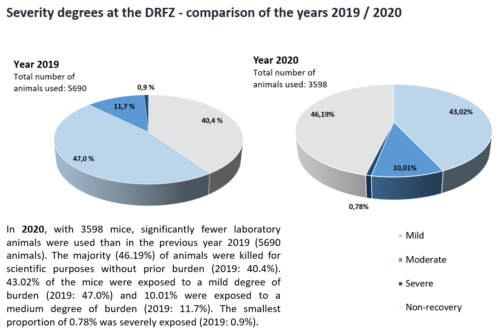
Animal Welfare at the DRFZ
Animal experiments are necessary to understand basic biological processes and develop new therapeutic approaches for human disease. However, scientists are obliged to replace animal experiments whenever possible by alternatives and to work towards the development of further alternative methods.
- In 2010, an amendment to the “Directive of the European Parliament and the Council on the protection of animals used for scientific purposes” (2010/63/EU), aiming at the harmonization of the in part widely differing regulations of the individual member states of the EU.
- Animal experiments are regulated in Germany by the Animal Protection Act and the Animal Protection Ordinance, by which Germany has one of the strictest animal protection laws worldwide. In 2002, animal welfare was even incorporated into the German Constitution as a national objective (Article 20a).
- Any animal experiment must first be approved by the local authorities, in which the scientific benefit must be substantially justified.
- In addition to an extensive literature research, the application for an animal experiment must also include a biometric, i.e. mathematical evaluation of the number of animals necessary for scientific analysis which, in turn, limits the number of animals to be used.
- Animal experiments may only be carried out by specially trained and qualified persons. They are subjected to continuous surveillance by the Animal Welfare Officers and the local authorities.
- Each animal experiment is recorded and the number of animals used is reported annually to the local authorities.
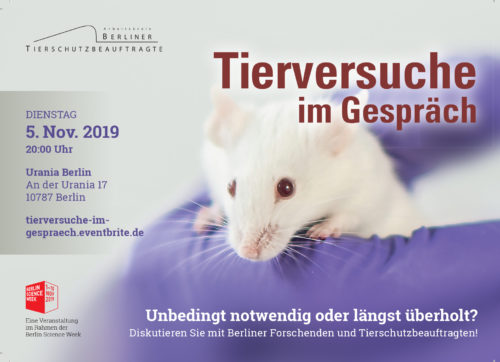
Animal experiments in discussion
“What if animal testing was no longer an option?” They do exist, the people who are open to the fact that they are doing animal testing for good reasons. On November 5, 2019, they answered the questions of the public at the Urania in Berlin, thus objectifying a debate that is often charged with emotion.
Why are animal experiments still being carried out when there are so many alternative methods available today? Are the animals doing well? And who actually benefits from such experiments? Public interest on these questions is immense, but at the same time many myths are still circulating on the subject of animal testing. This situation calls for first-hand information, but also open discussion at eye level.
For this reason, the Berlin Animal Welfare Officers have now organised a joint event together with major biomedical research institutions in the city for the first time as part of Berlin Science Week. The invitation to the themed evening entitled “Animal experiments in discussion – absolutely necessary or long outdated?” at the Urania Berlin was followed by around 250 interested people, including schoolchildren and teachers.
A trusting audience
As a first introduction, the moderator of the evening, the Berlin science journalist Lilo Berg, asked about the attitudes towards animal experiments. Only a dozen guests pleaded for the complete abolition of such experiments. About a third saw a benefit in principle, but thought that there were too many animal experiments. About two thirds raised their hands at the answer option “I trust the scientists that they will only use animal experiments if there is no other way”.
The next round of questions also dealt with the popular topic of animal testing and cosmetics. In the public discussion, mistakes are often made in this regard, as was the case this evening. Some were of the opinion that permission to test on animals depends on the type of cosmetic product, or that cosmetics tested on animals abroad may be imported into the EU. However, for some years now, cosmetics tested on animals have not been allowed to be sold in the EU – even if they come from abroad.
Animal experiments for veterinary medicine
Little known to the public is also the fact that training on animals is considered an animal experiment, says Professor Christa Thöne-Reineke of Freie Universität Berlin. There the veterinary specialist for laboratory animal science trains veterinary and animal care personnel, among other things.
In her work she is following the internationally recognized 3Rs principle for experiments on live animals. The three “Rs” stand for the development of experiments that are more humane for the animal (refinement), for the reduction of experiments, and for the replacement of animal experiments. Christa Thöne-Reineke is also involved in the graduate college of the Berlin-Brandenburg Research Platform BB3R, which is based at Freie Universität Berlin and is the first graduate college on alternatives in animal experimentation worldwide. She is a cooperation partner in the network of Charité 3R, an initiative founded in 2018 to anchor the good idea of 3R in research and practice. The professor already uses a range of alternative methods in her courses, including online tutorials, models and simulators. Thöne-Reineke said: “As long as the legislator classifies training on animals as animal experiments, we cannot do without animal experiments in veterinary medicine training”.
Basic Research – also on animals
Professor Anja Hauser, veterinarian and immunologist at the German Rheumatism Research Center and Charité, and Dr. Thomas Kammertöns, immunologist at the Max Delbrück Center for Molecular Medicine and Charité, explained why animal experiments are currently indispensable for basic and clinical research.
Experiments in cell cultures or on organoids are suitable for obtaining initial findings, both researchers said. However, the complex processes in the immune system, in which a large number of cell types in different organs interact, could only be observed in the entire organism. Anja Hauser described how research on mouse models has led to a novel drug that helps some patients suffering from multiple sclerosis. And Thomas Kammertöns is currently using mouse experiments to develop a novel cancer therapy that stimulates the body’s own immune system to fight tumor cells.
Faster towards alternatives
Robert Landsiedel is developing alternative methods to replace animal experiments in the legally required “mandatory tests”. The chemist and toxicologist works with his large team at the Ludwigshafen-based chemical company BASF.
Currently, it often takes up to ten years before an alternative method is recognized by the authorities as a suitable replacement. “With the current approach, it will be more than a hundred years before all regulatory animal experiments for the toxicological testing of chemicals can be replaced,” said Landsiedel. He suggested simplifying the recognition of alternative methods and setting priorities for the future development of alternative methods.
The lively discussion focused on alternative methods to animal experiments and questions relating to the keeping of experimental animals. In response to the audience’s question “What happens when an animal experiment is approved – is there free rein?”, the experts on the podium described the strictly regulated and meticulously documented procedure in which precise records must be kept of each individual animal. “And what would happen if no more animal experiments were allowed to be carried out overnight,” was the question asked by another guest. Then there would be no more new drugs or chemicals, the panelists said, because for this purpose animal experiments are legally required and still make sense. After the official end of the event, the discussion continued over pretzels and beer – around the well-attended information stands of Berlin’s animal welfare officers.
“Open Debate”: The quality portal for online debates
Open Debate is the debate portal of the Tagesspiegel publishing group for institutions, organisations, and companies who aim at sharing their debates publicly and making them accessible for a prolonged period of time. Open Debate promotes expert discussions on relevant and interesting issues in science, politics, business or society and culture.
Open Debate not only makes debates visible to a wide audience but also provides quick access to the debates and to the most important positions via the Open Debate Map.
Further information: opendebate@tagesspiegel.de
In many cases, animal experiments are still indispensable in basic research today. The experiments enable scientists to investigate complex biological processes in animals, in order to better understand the human organism and how it functions. Animal experiments also play a decisive role in medicine, for example in the development of new drugs and therapeutic methods. Nevertheless, opponents of animal testing criticize that scientists should switch to existing alternative methods. They demand the abolition of animal experiments. Are animal experiments really necessary for research? And is man allowed to let animals suffer for his interests? In this debate, renowned experts dealing with animal experiments in different contexts speak out – either as they themselves use animal experiments in their research, as they are of the opinion that animal experiments are replaceable or as they devote themselves to the ethical dilemma that animal experiments present. The debate is intended to contribute to a well-informed and objective discussion on animal experiments and to make the various arguments transparent.
Moderator of the debate: Christoph Herbort-von Loeper, Deputy Press Officer of the Leibniz Association
Please read the contributions of the debate so far.
Please read the article by Andreas Radbruch, Scientific Director of the German Rheumatism Research Center Berlin, a Leibniz Institute, and Professor at the Charité Universitätsmedizin Berlin.
“The enemy in my body – animal models show ways to cure autoimmune diseases and cancer”

 Deutsch
Deutsch